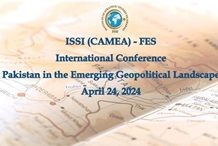A new theatre is opened. The conflict is emerging in the name of “freedom of navigation” , where the US destroyer USS Lassen’s intrusion on 27th October within 12 nautical miles of Nansha island ,a Chinese artificial island .The United States did not seek permission from China, to enter the waters, where the Americans interpret that they do not need their permission.
US defence secretary Ash Carter warned that further “freedom of navigation” operations in the region were planned. “We will fly, sail and operate wherever international law permits,” he told a congressional hearing. A serious situation has been emerging between China and the United States, where their incursion might force China to militarize the island.
Americans refute Chinese claim of ownership of many of these islands- sparking a widespread protest by China. The Chinese ambassador in Washington D.C., Cui Tiankaim, called it a serious military and political provocation by ignoring international law. Beijing also summoned US ambassador, Max Baucus , by expressing strong discontent. Moreover, the Chinese navy has warned that any further intrusion would “trigger eventualities”.
Under the pretext of “freedom of navigation”, United States has been flexing its muscle in South China Sea. The US provocative acts might further escalate, where a restraint was needed to avoid tension in South China Sea, the busiest maritime trade route.
Hugh White, a professor at the Australian National University in Canberra writes in The World Post that American action in South China “was designed to reassert America’s naval preponderance in the western Pacific in the face of Beijing’s increasingly bold and forthright challenge, and thereby to defend the traditional U.S.-led regional order from China’s drive to displace American leadership and create a new Sino-centric strategic system in Asia”.
The US pivot to Asia is an effort to re-balance strategic relations with a number of countries in Asia-Pacific. The policy was launched in 2011, when Japan was pushed to assert politically and militarily. The main purpose of the US- Asia-Pacific pivot was to counterweight the rise of China in South China Sea and to fan a number of maritime disputes.
China claims its legal suzerainty over these islets, atolls, shoals, and reefs contested by a number of countries such as Japan, Vietnam, Philippines, Brunei, Indonesia, and Malaysia. The United States is not a claimant party to the conflict but as a third-party has been interfering.
It is the collective responsibility of the ASEAN members to warn the United States as it is destabilizing the region. There is a China-ASEAN code of conduct on the issue, where it is time for Beijing to consult ASEAN members on this latest US provocation.
The question arises then is that why a non-regional super power has been intimidating and interfering. Is the US interference really unthinkable? Why is a third- party interfering and deliberately made provocation against China?
China thinks that the “safety of navigation” has also been stipulated in the UN Convention of Sea. Their claims are historical and China physically possesses these islands as part of its territory under its indisputable sovereignty. The US provocation would not weaken or change China’s position in South China Sea, where it declared its readiness to fight and prepared for the worst.
The World Post writes that “if China retaliates in any substantive way, for example, by enhancing its military forces or posture around the Spratly Island, then Washington faces a very tough choice indeed”. Reaction by Beijing was diplomatically very powerful and if Beijing militarily reacts it would challenge American order in Asia-Pacific. It is better that America should not further test the nerves of Beijing. It is a powerful country now.
The latest showdown is the result of US strategic global failures, where it has witnessed a policy failure all over Asia. The Taliban insurgency in Afghanistan has not been controlled in the last 14 years. There is failure in the US Middle East policy such as in Iraq, Libya, Egypt, and Syria and Russia has threatened the United States in Syria. North Korean policy is another US failure. America launched illegal military action in support of its allies in Iraq in 2003, it would not be possible in South China Sea, where China could be directly affected.
The opening up a new theatre in South China Sea is an escaping strategy, difficult to achieve. By flaring up South China Sea territorial row, America would probably seek defence arrangements with regional stakeholders.
The United States must acknowledge the rise of China as power in world affairs, where it is a leading global economy. Its progress should not be disrupted. The United States must accommodate Chinese power in island disputes and should remain away from the mutual rivalry between China and a number of countries.
Views expressed are of the author and do not necessarily reflect the views of ISS or of the Government of Pakistan.












